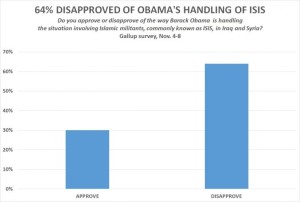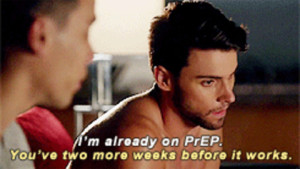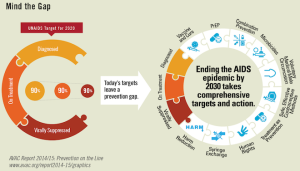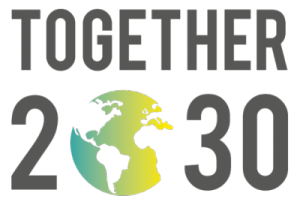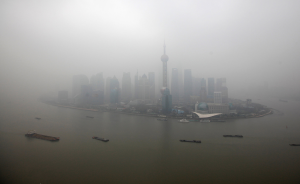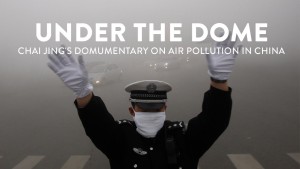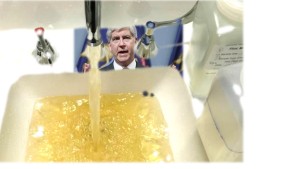The Syrian Refugee Crisis
Holding onto our humanity: Helping those who are clinging to their hope.

Over the past two years the Syrian Refugee Crisis has exploded onto media across the world. However, the largest refugee crisis in our generation’s history is not a recent event.
This crisis has been building since the start of the Syrian Civil War in 2011 and continues to this day. This gap in media coverage is not because of the lack of suffering early in the crisis, but because the western world was not affected until now. This delayed reaction of empathy by the West is due to a lack of concern with matters that are not directly affecting themselves.
Overall the reaction of the Western world has been lethargic and cautious. This is obviously a large issue in regards to how many facets this crisis has. There is such a large amount of people that are in limbo and seeking asylum. However, considering it is the largest refugee crisis in our generation, the West needs to step up and help these Syrian Refugees find a home.
The Syrian Civil war is not as simple as good versus bad. The matter stretches much farther than black and white. The trigger that started the war was the treatment of protesters by the Assad regime. After protests erupted for democracy and overthrowing President Assad, violence ensued and escalated to a civil war; the rebels fighting against the government. The UN stated that by June 2013 more than 90,000 people had been killed because of the Syrian Civil war conflict. The violence increased and by August 2015 more than 250,00 people had been killed.
Although the civil war began as the government versus pro-democratic protestors, there are undercurrents of deep religious unrest. The majority of the Country is Sunni and this group is fighting against President Assad’s Shia Alwite Sect. To complicate the conflict, world powers are backing the rebels or the Assad regime.
Neither side is innocent. The UN has confirmation that
“all parties to the conflict have committed war crimes – including murder, torture, rape and enforced disappearances. They have also been accused of using civilian suffering – such as blocking access to food, water and health services through sieges – as a method of war”.
This war has displaced over 4 million people. Civilians are being killed by both sides and are fleeing Syria with nothing but their families and a few belongings. In the image below a baby girl is sleeping on a mattress in a room that is now her home. This home is only partially constructed and is shared by four separate families. These living conditions are tragic, especially since the home they once knew is gone forever.
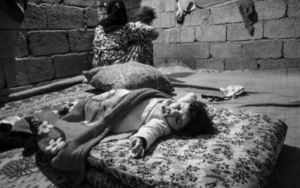
The majority of refugees are seeking asylum in countries within the Middle East. These neighboring countries are hosting millions of refugees. The UN Refugee Agency, UNHCR, states that Turkey is home to 2,749,140 registered refugees and rising. This influx of people is draining their resources and putting huge strains on their economy. This has created some unrest, but the majority of countries have been welcoming to refugees.
Although they are doing their best to accommodate these people, there is simply not enough space or resources. This is causing many refugees to flee towards Europe in hope of finding safety and a better life.
Not only is the process long and lethargic, but many refugees fled their homes in fear, without taking their papers. It is not an easy task to escape a war outside your door. Choosing between grabbing your loved ones or grabbing your papers is a simple decision; because of this, many do not have any identification.
“The number of Syrians arriving in Europe seeking international protection continues to increase. However, it remains low compared to Syria`s neighboring countries, with slightly more than 10% of those who have fled the conflict seeking safety in Europe.” – UNHCR
Sarah Glazer’s article European Migrant Crisis states that the problem with this is that refugees “are crossing the Mediterranean on overloaded boats or traveling via treacherous land routes, often victimized by unscrupulous human traffickers”.
Half of these refugees fleeing their homes are children and a majority of them are also women. The UN stated that it needs $3.2bn to help the 13.5 million people. This includes the 6 million children. These people will need humanitarian assistance inside of Syrian in 2016. Not only is the process of applying for asylum long and arduous, but there are also numerous steps, especially when seeking Asylum from the United States.
Migrants are dying and Europe is not welcoming them with open arms. In fact many countries are strengthening their borders in an effort to keep these people out. Europeans are worrying about how this influx of migrants will affect their culture and economy, while others are also worried about potential terrorist threats. This rush of migration has begun to affect the west and people are finally starting to pay closer attention to the Syrian Civil War and the Refugee Crisis.
There are many sides to this issue regarding the benefits and problems around allowing more migrants into Europe and the United States.
In order to be accepted into the United States, refugees are required to be screened by the FBI Terrorist Screening Center, Department of State, Department of Defense, and Homeland Security. Even before they go through all of these steps, the U.N High commission is placing them in neighboring countries where they may have family or other connections.
Seth G. Jones of RAND Office of External Affairs notes that mostly none of the terrorist threats since 9/11 have any connection to refugees. Most terrorist systems have not used the refugee system to enter into the United States. This is because the system randomly assigns refugees to countries offering aid. Even if by chance they were located to the United States there are extensive security checks.
Recently the United States promised to accept 10,000 refugees. In the grand scheme of the Syrian Refugee Crisis this is a miniscule amount of people, but it was a huge step for the United States. The European Justice and Home Affairs Minister have promised to relocate 160,000 refugees over the next two years. This number will be divided among the European Union. There are still some major concerns and backlash from some states in allowing Syrian Refugees into the United States. However, there is data that shows that Refugees benefit the economies and the communities that they are already settling in.
An example of this would be the supportive resettlement programs in Ohio have helped stimulate the economy. Bloomberg Business weekly compiled studies showing that the refugees started 38 new businesses. This was solely in Cleveland in as little time as 2002 to 2012. These businesses support other refugees that are settling, as well as help the surrounding communities.
The United States has a long history of accepting refugees. Migrants are a large part of our history and success of our nation. Who are we to turn away those in need when all they want is to escape the hell of the Syrian Civil War?
Instead of welcoming them with open arms, Europe is forcing Refugees to put their lives in the hands of smugglers. It is understandable that the west would panic with this immanent influx of refugees, but the fact that Europe and the United States considered turning their back on the people that need it most is disgraceful. Syrian refugees pray for peace. They hope for a better future. Do we have a responsibility to help the vulnerable, or are we going to stand aside and watch them suffer?
We need to instill hope and a way to fix their economy and political turmoil. The only way to insure peace is to educate future generations of Syrian civilians. If we do not have the capacity or political power to allow more refugees into the United States, then as a nation we need to make sure that these innocent Syrian children can continue their education. Alexander Bretts and Paul Collier of Foreign Affairs state that the international policy towards Syrian refugees is “antiquated and fueled by panic”.
Some leaders in Europe are trying to develop a system to prevent refugees from attempting the parlous journey across the Mediterranean. Many are reacting to this crisis with panic, when what we need to do is try and help those who have lost their hope and are suffering more than many of us could ever imagine.
Millions of Children have been forced to quit school because of the conditions of the refugee camps and the lack of resources. Not only are they fleeing from violence, but they have lost one of the fundamental things that guarantees them a hopeful future. They have lost their access to education. When the Syrian Refugees are in need of food, medical care, and shelter, education is often lost. These children do not have a safe place to sleep, never mind play or learn. The Syrian Civil war has been raging for four years without signs of stopping.
Many children have only known life at these refugee camps, some have even been born into them. These conditions of struggle have become their normalcy.
“Between 2 million and 3 million Syrian children are not attending school. The U.N. children’s agency says the war reversed 10 years of progress in education for Syrian children.”
– World Vision
Our system of helping and taking in Refugees is flawed. We need to focus more on resolving the Syrian Civil War so that we can send these refugees back to their home instead of displacing them further. In order to prevent further bloodshed and violence we need to educate these refugees so that they can improve their country once they can return. In times of peril it seems almost impossible to continue education, but it is important to inspire hope for a better future.
Work Cited
Glazer, Sarah. “European Migrant Crisis.” QR Press, July 31, 2015. Accessed April 17, 2016. QR Researcher.
“Help Refugees
Help Themselves.” Foreign Affairs. 2015. Accessed April 20, 2016. https://www.foreignaffairs.com/articles/levant/2015-10-20/help-refugees-help-themselves.
“How Will the U.S. Absorb Thousands of Syrian Refugees?” Bloomberg.com. Accessed April 20, 2016. http://www.bloomberg.com/politics/graphics/2015-syria-refugees/?=2.
Jones, Seth G. “The Syrian Refugee Crisis and U.S National Security.” RAND Corperation. November 2015. Accessed April 24, 2016.
Rodgers, Lucy, David Gritten, and James Offer. “Syria: The Story of the Conflict – BBC News.” BBC News. March/April, 2016. Accessed April 17, 2016. http://www.bbc.com/news/world-middle-east-26116868.
“UNHCR Stories from Syrian Refugees.” UNHCR Stories from Syrian Refugees. Accessed April 20, 2016. http://data.unhcr.org/syrianrefugees/syria.php.
“UNHCR Syria Regional Refugee Response.” UNHCR Syria Regional Refugee Response. Accessed April 24, 2016. http://data.unhcr.org/syrianrefugees/country.php?id=224.
“What You Need to Know: Crisis in Syria, Refugees, and the Impact on Children.” World Vision U.S. April 11, 2016. Accessed April 24, 2016. https://www.worldvision.org/wv/news/Syria-war-refugee-crisis-FAQ.
[1] How well does the title provocatively focus the reader’s attention, as well as the lede? Is it thoughtful, creative, clever? Does it lead the reader into the text and provide some insight into the issue?
– The title is very blunt but the sub header is intriguing and hints at what the article will touch upon. The lede is factual but it also grabs the readers attention and states a fact about the Syrian refugee crisis that many may not be aware of.
[2] How well does the introductory section of the article invite the reader into the paper, as well as offer up exigency? How does it locate a problem or controversy within a context that provides background and rationale?
– The introductory section of this paper is intriguing and has an interesting stance on the topic of the Syrian Refugee Crisis. This paragraph gives a brief explanation on why there should be more concern with the Syrian Refugee Crisis and how the Western world has been slow to react. Then it goes on to give background on the topic that many people have little knowledge on. By doing this it helps bring the reader into the discussion so that they can understand the point of the article further.
[3] How well does the writer offer up a strong ‘idea’ that requires analysis to support and evolve it, as well as offers some point about the significance of evidence that would not have been immediately obvious to readers.?
– The main idea of the article is very clear and there is a vast amount of evidence to support the key points that the article is hinting at. The article evolves through the course of reading it. There are many facets to the issue and many of these concerns are covered.
[4] How well does the writer show clarity of thought; uniqueness of presentation; evidence of style; and historicized topics?
– the organization and writing of this article is clear. The presentation takes a unique view on the topic as well as the style and historicized the topic itself.
[5] How well does the writer recognize that a NYTs Magazine audience will challenge ideas that are overgeneralized or underdeveloped or poorly explained? (that is, did the writer avoid cliché and vagueness or address points/issues readers are likely to have?) How well did the writer decide about how to develop, sequence, and organize material?
– This topic is very vast but I feel that the article covers many of the concerns that the reader might have. It does not give an example of how to fix the Syrian Refugee Crisis because that would be impossible for this topic. However, the article does give a direction that the world should focus on in order to better the lives of these innocent people. The article is to the point and the argument is well organized. This topic was difficult to organize because there are so many facets the crisis and I did not want to leave anything out.
[6] How well does the writer research a controversy, develop a persuasive stance, utilize research about the topic, and join the ‘debate’ by making an argument of importance?
– There are a myriad of opinions and stances on the Syrian Refugee Crisis, but this article takes a unique perspective on the crisis while using many different sources to emphasize the argument.
[7] How well does the writer meet or exceed research expectations of assignment requirements (6 appropriate secondary sources, 1 visual source, (or more) and primary research? ).
– There are more then one visual source and more than 6 secondary sources.
[8] How well does the writer integrate secondary and primary sources (that support and complicate the topic) effectively into the text, introducing and contextualizing them, and “conversing” (i.e. no drop-quoting) in ways that deepen and complicate the analysis?
– the sources are well integrated and stay true to the format of a new york times article. The sources add to the argument and are not distracting. These sources deepen the argument and strengthen the main point of the essay. There is analysis for each of the quotes and they are well integrated.
[9 How well does the writer persuade an audience to consider claims made from a particular position of authority on which you have built your research? How strong and effective is the writer’s use of rhetorical tools (ethos, logos, pathos)?
– My use of rhetorical tools is strong because there is a lot of factual evidence that persuades using logos. The topic itself has a lot of ethos because of the severity of the crisis. I utilized images to persuade the viewer. My use of sources such as the UN makes my argument valid and the use of pathos strong.
[10] How well does the writer select appropriate, interesting, revealing visual? Has the writer placed a visual strategically in the essay and provided relevant commentary on and/or analysis of them? Do the visuals contribute to the essay in meaningful ways (i.e. would the essay be affected if the writer took the visual away)?
– The visual are relevant to my topic and even are woven into the story. They are not randomly placed but placed so they are visually interesting and works well with the content. The images are meaningful and strengthen the rhetorical appeals.
[11] How well does the writer show development of final article using various drafts, in-class peer editing and workshops, and/or teacher comments?
– The final essay is very different form the original presentation. The organization is different and the ending of the essay is more in depth. The scrambled workshop was most helpful because it helped me realize that the structure of my original draft was confusing. Once I changed that my article was much better.
[12] How well does the writer use hyperlinks—are they effective/appropriate?
– The hyper links send the reader to useful sites that have relevant information and back up the argument of the article.
[13] How well did the writer edit for grammar, style, and usage effectively? Does the writer’s attention to sentence level issues help him/her establish authority or credibility on the issue?
– The authority of this is very strong. The style of this article is effective because it is a heavy topic that should be taken seriously. The credibility of the argument is enhanced by the sentence structure and the sincerity of how the article was written. Overall this article is well organized and explains the topic well, but also give a unique perspective.



